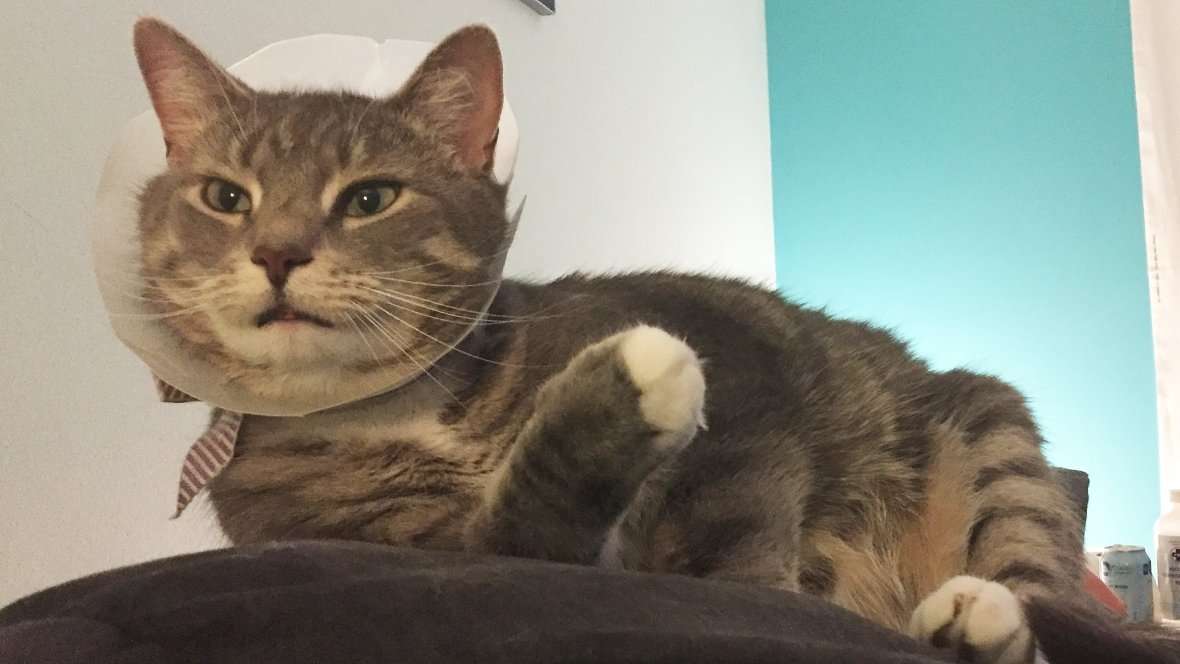Nova Scotia has officially become the first province in Canada to ban elective cat declawing.
The decision by the Nova Scotia Veterinary Medical Association was announced in December. There was a three-month grace period before it took effect today.
"I see declawing as a mutilation of an animal for no direct benefit to the animal. It's something that's done mostly to protect furniture," said retired veterinarian Hugh Chisholm, who has advocated for a declawing ban for years.
The practice has already been banned in the U.K., Europe, Australia and several California cities. There also have been calls in other Canadian provinces to ban declawing.
Declawing involves the amputation of bones in the cat's paws.
"It would be the equivalent to you taking a very sharp knife and cutting off your finger at the last knuckle joint," Chisholm said.
The procedure can lead to lasting impacts on a cat, including arthritis and pain in the paws and limbs, because the procedure changes the way a cat walks.
Chisholm said declawing cats now violates the province's veterinary medical association's code of ethics.
"As a veterinarian you could face pretty strict punishment, including loss of your licence to practice," he said.
Bedford veterinarian Jeff Goodall said he's glad there's an end to unnecessary declawing, but has concerns with the ban.
His practice did not normally do declawing just because an owner wanted it.
However, in rare circumstances — about once a year — his practice would agree to perform the procedure.
For example, an owner undergoing chemotherapy could develop major health problems if scratched.
Bunk, a 7-year-old grey and white tabby, wears a cone most of the time to keep him from scratching himself raw. He is not declawed. (Cassie Williams/CBC)
People with "a disorder or disease that would make them not heal properly from an accidental scratch," or taking "medication that depressed their immune systems, like chemotherapy," would be at risk, Goodall said.
In one instance, the declawing was done as a last-ditch effort to help a cat "that was actually self-mutilating," he said. "It would scratch itself to the point of harm. Once we performed the declaw, we could manage the case with behaviour medication."
Goodall said he's also concerned that pet owners might go to out-of-province veterinarians who use older and more invasive forms of the surgery.
Retired veterinarian Hugh Chisholm has advocated for a declawing ban for years. (Jane Sponagle/CBC)
Chisholm said although many people may choose to have declawing performed at vet offices outside the province, a ban is necessary.
"There will always be people who will do it, there will always be people who will want it done, unless there's a ban in place," Chisholm said.
"That's why we do need the ban. Because one declaw is one too many."

AliencoreOverwatch on March 15th, 2018 at 13:58 UTC »
Bubbles must be ecstatic!
CodeMonkey24 on March 15th, 2018 at 13:25 UTC »
My parents never got their cat declawed because they would go to the camp every weekend, and let the cat roam about the bush all day. They figured the cat needed to defend itself. The drawback to it, was that the cat loved climbing trees, and would whine until someone got the ladder out to help get it out of the tree after.
derezo on March 15th, 2018 at 13:14 UTC »
"Declawing a cat does not just remove the nails. It removes bones of the toes, comparable to amputating all of a human's fingers at the last knuckle"
I was told this practice was banned in January, I'm surprised to learn it is still allowed in Ontario.